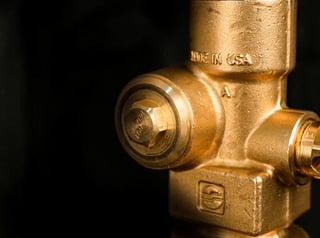Two effective methods to prevent contamination in beverage CO2 cylinders
Recommendation One: Inversion Method
What is the Inversion Method?: Inverting the cylinder requires a cylinder inverter and that an employee does the inverting. Every cylinder would need to be inverted, vented and then evacuated before refilling it with beverage CO2.
Why this makes sense: If there is no concern about dedicating the time to the task—and if you have an employee with extra time on his or her hands, this could prove to be a good solution. Keep in mind, though, that the inversion method does not prevent backflow; instead, inversion simply reduces the chance of delivering contaminated cylinders.
Recommendation Two: RPV Valve

What is an RPV?: An RPV (Residual Pressure Valve) has an integral piston that is activated (opened) by a pin on the CGA fill connection, which allows the valve to open and gas to flow into the cylinder for filling. During customer use, CO2 can only flow in one direction – out of the cylinder. During use,the RPV valve provides a constant positive pressure of 30-50 psi, ensuring that the downstream pressure does not overcome the cylinder pressure, which is the primary cause of contaminates flowing back into the cylinder.Why this makes sense: This is much less labor intensive than the inversion method and it provides piece of mind. An RPV is a smart choice if you wantto not only provide a clean cylinder to your customer, but prevent backflow contamination during use, ensuring you also receive it back as clean as when it was shipped
We are always here live to answer all of your CO2 filling questions and needs. 1.800.264.7793



